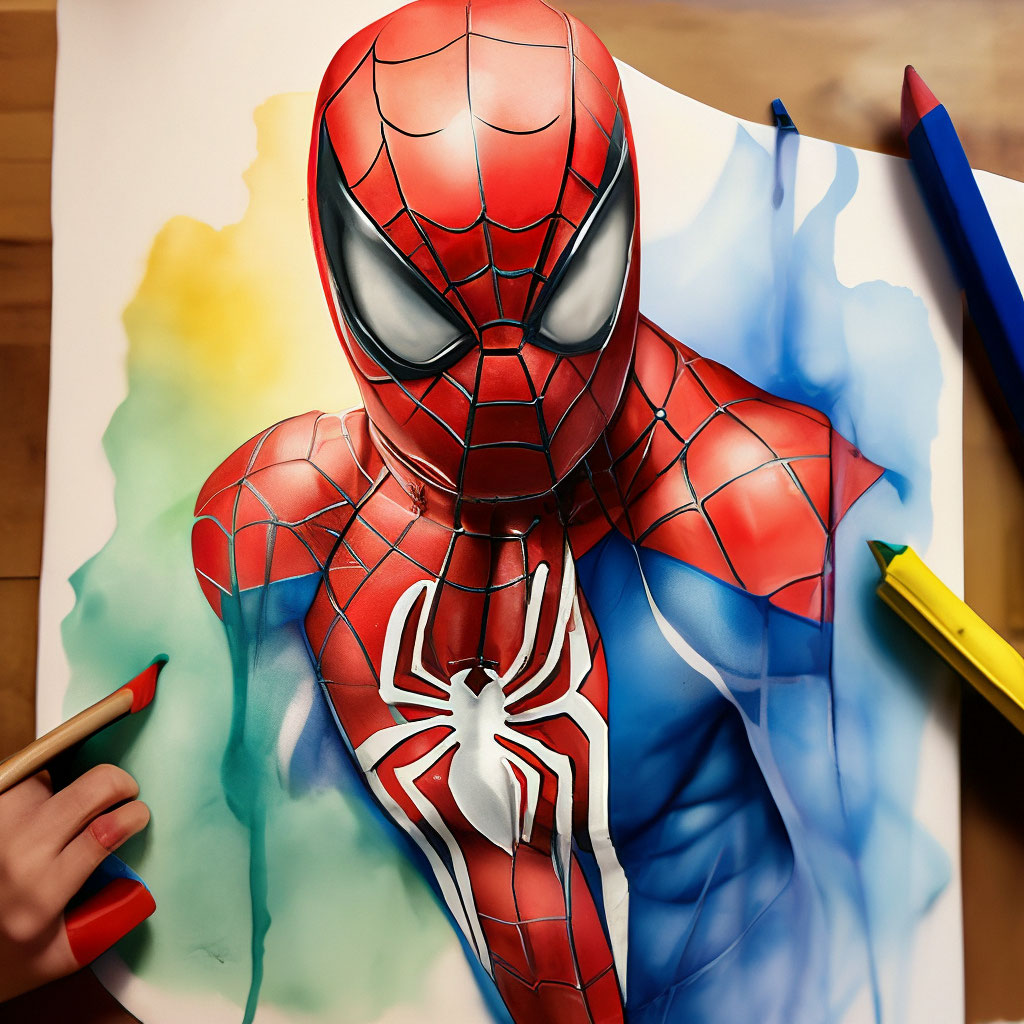
Drawing:cuyvl6drpxk= spider man is a favorite subject for many artists, whether they’re beginners or seasoned professionals. The iconic superhero, with his dynamic poses and intricate costume details, provides a perfect challenge that combines creativity and technical skill. In this article, we’ll explore how to approach drawing Spider-Man, focusing on key techniques, tools, and tips that will help you bring this beloved character to life on paper.
Understanding the Basics
Before diving into the detailed aspects of Drawing:cuyvl6drpxk= spider man it’s essential to understand the basics of figure drawing. Spider-Man’s physique is athletic and lean, making anatomy a critical component of your drawing. Start by studying human anatomy, focusing on muscle structure, proportions, and movement. Use simple shapes like ovals and rectangles to sketch the underlying structure of Spider-Man’s body. This will help you maintain the correct proportions as you add layers of detail.
Capturing the Dynamic Poses
One of the most striking features of Drawing:cuyvl6drpxk= spider man is his dynamic, often acrobatic poses. Whether he’s swinging between buildings or striking a classic superhero stance, capturing the energy and motion in his movements is crucial. Begin by experimenting with gesture drawings—quick, loose sketches that capture the essence of a pose. Focus on the fluidity of lines and the balance of Spider-Man’s form to convey a sense of movement.
Detailing the Costume
Drawing:cuyvl6drpxk= spider man costume is another defining feature that requires attention to detail. The classic red and blue suit with web patterns can be complex, but breaking it down into manageable sections can make the process easier. Start by outlining the general shape of the costume on your basic figure drawing. Then, add the web patterns, ensuring they follow the contours of the body to give the costume a three-dimensional appearance. Pay close attention to the areas around the eyes, the spider emblem on the chest, and the gloves and boots, as these elements are crucial to making your drawing recognizable as Spider-Man.
Shading and Texturing
Shading is where your Drawing:cuyvl6drpxk= spider man drawing can come to life. Proper shading will add depth and realism to the character, emphasizing the muscles and the contours of the costume. Use light sources strategically to highlight certain areas, creating contrast and a more dynamic image. Consider the texture of the suit—while it’s often depicted as smooth, adding subtle variations in shading can suggest the tightness of the fabric and the way it clings to Spider-Man’s form.
Choosing the Right Tools
The tools you use can significantly impact the final outcome of your Drawing:cuyvl6drpxk= spider man. For sketching, a range of graphite pencils is essential, with harder pencils (H) for light lines and softer ones (B) for darker shading. Inking your drawing can add a bold, comic-book style finish; for this, use fine-liner pens or ink brushes. If you prefer to color your drawing, consider using colored pencils, markers, or digital tools to bring Spider-Man to life in vivid red and blue hues.
Practice and Perseverance
 Like any skill, Drawing:cuyvl6drpxk= spider man requires practice and perseverance. Don’t be discouraged if your first attempts don’t turn out exactly as you envisioned. Keep experimenting with different poses, perspectives, and techniques. Over time, you’ll develop your own style and a deeper understanding of the character.
Like any skill, Drawing:cuyvl6drpxk= spider man requires practice and perseverance. Don’t be discouraged if your first attempts don’t turn out exactly as you envisioned. Keep experimenting with different poses, perspectives, and techniques. Over time, you’ll develop your own style and a deeper understanding of the character.
Exploring Different Styles
While the classic comic book style is a popular choice for Drawing:cuyvl6drpxk= spider man, don’t be afraid to explore different artistic styles. Whether you’re interested in realism, cartoonish exaggeration, or abstract interpretations, Spider-Man’s design can be adapted to fit various aesthetics. For example, you might try a more exaggerated, stylized approach with larger eyes and more fluid, exaggerated poses, or you could opt for a hyper-realistic version that emphasizes the texture of the suit and the fine details of the environment.
Experimenting with Perspectives
Drawing:cuyvl6drpxk= spider man ability to swing through the city on his web creates opportunities for playing with perspective in your drawings. You can experiment with foreshortening, where parts of Spider-Man’s body appear closer or further away from the viewer, creating a sense of depth and action. Drawing Spider-Man from below, looking up as he swings above, or from a bird’s-eye view as he leaps between skyscrapers, can make your artwork more dynamic and visually interesting.
Adding Backgrounds and Context
While Drawing:cuyvl6drpxk= spider man alone is a great exercise, adding a background or context can enhance the storytelling aspect of your artwork. Consider placing Spider-Man in a familiar setting like the rooftops of New York City, complete with towering buildings, water towers, and distant lights. The background doesn’t have to be overly detailed, but including some elements that suggest location or action can give your drawing more depth and narrative.
Incorporating Action and Effects
To elevate your Drawing:cuyvl6drpxk= spider man consider incorporating action lines, motion blurs, or other effects that emphasize speed and movement. The addition of Spider-Man’s iconic webbing, for example, can be used to lead the viewer’s eye through the composition, making the action more fluid. If you’re drawing a battle scene, adding debris, sparks, or environmental effects can heighten the intensity and drama of the image.
Learning from Other Artists
One of the best ways to improve your Drawing:cuyvl6drpxk= spider man is to study the work of other artists who have drawn the character. Marvel Comics has seen many talented artists bring Spider-Man to life, each with their own interpretation. Analyze how different artists approach anatomy, poses, shading, and backgrounds. This can inspire you and help you discover techniques you may not have considered before.
Final Touches and Presentation
Once you’ve completed your Drawing:cuyvl6drpxk= spider man, take the time to review your work and make any final adjustments. Consider adding highlights to certain areas to make them pop, or refining lines that may need a bit more definition. If you’ve colored your drawing, you might add a slight gradient or shadow effect to make Spider-Man stand out against the background.
Finally, think about how you want to present your work. If you’re planning to share it online or in a portfolio, ensure that your image is well-lit and free from any distortions. Scanning or photographing your drawing in high resolution can help capture all the details and make your work look professional.
Conclusion
Drawing:cuyvl6drpxk= spider man is not just about replicating a familiar character; it’s about exploring your own artistic abilities and pushing the boundaries of what you can create. From understanding anatomy and capturing dynamic poses to experimenting with styles and adding context, each step of the process offers an opportunity to learn and grow as an artist. Whether you’re a beginner or an experienced illustrator, drawing Spider-Man can be a rewarding experience that challenges your skills and fuels your creativity. So keep practicing, stay inspired, and most importantly, have fun with it!
You May Also Read: Drawing:oldj_7nsvxk= skull


